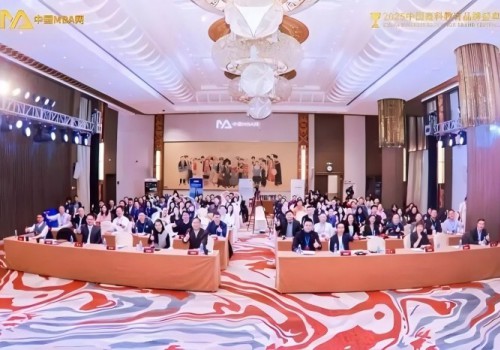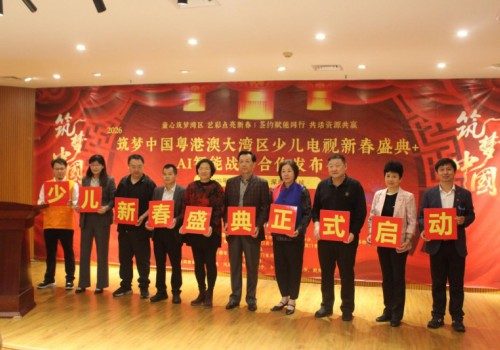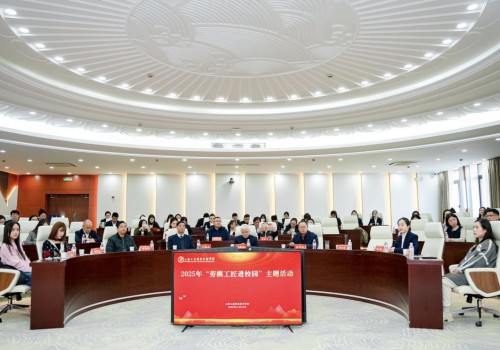By Wang Hairong
Chinas best and brightest in science and technology gathered in Beijing from May 28 to June 1 for their biennial meetings. President Xi Jinping delivered a speech at their joint opening ceremony calling for more efforts to develop China into a world leader in science and technology.
At the 19th Meeting of the Academicians of the Chinese Academy of Sciences (CAS) and the 14th Meeting of the Academicians of the Chinese Academy of Engineering (CAE), Xi said that the academies should continue to play a role as national strategic scientifi c and technological forces, push forward development and scale new scientific heights. He encouraged academicians to conduct forward-looking and strategic research and said he hopes they make continuous breakthroughs in key scientific fi elds.
The countrys new academicians were also announced. Last year, 61 academicians with an average age of 54 were added to the CAS, and 67 academicians averaging 56 years of age were admitted into the CAE.
In addition, the CAS acquired 16 foreign academicians and the CAE 18, including Microsoft founder Bill Gates who made it onto the list as the CEO of TerraPower, a company advancing the use of nuclear energy to meet pressing global needs.
Innovation underscored
Xi stressed the important role of science and technology in fueling development, saying that innovation is its primary driving force and urged that efforts be made to ensure high-quality science and technology to boost the develop- ment of a modernized economy.
As China strives for prosperity and rejuvenation, it needs to devote more energy to promoting science and technology, and endeavor to be a major world center for science and innovation, he said.
Xi also emphasized that independent innovation is the only path for China to reach new heights in science and technology, noting that the country should strive to independently develop core technologies.
After reviewing Chinas recent scientific and technological breakthroughs, Xi pointed out some salient problems hampering the development of science and technology such as inadequacies in vision, innovation capability, resource allocation and relevant policies and institutions.
He urged an overhaul of the scientifi c and technological system to improve innovation efficiency and vitality and also stressed that technological innovation should be accompanied by institutional innovation.
He also called for the deepening of international exchanges and cooperation and the establishment of partnerships featuring win-win cooperation to meet global challenges.
Institutional innovation
As a civilization with a long history, China has made remarkable innovative contributions to the world. However, because of historical reasons such as the impediments of feudal society and foreign invasions, as well as problems in innovation management, China still lags behind developed countries in innovation culture, environment and output, said Liu Zhongmin, an academician with the CAS and head of the CAS Dalian Institute of Chemical Physics.
The national innovation index report released by the Chinese Academy of Science and Technology for Development in August 2017, ranked China in 17th place. The country climbed one number on the think tanks annual innovation ranking, which the academy has been compiling since 2011. The report showed that China still trailed behind developed countries such as the United States, Japan and a number of European countries in terms of innovation, but was ahead of other developing countries.
Kang Le, a CAS academician and a research fellow with the Institute of Zoology under the CAS, recently said that one of the reasons for fewer innovative scientific and technological achievements in China than in developed countries is its relatively short history in modern research.
He pointed out that modern science was only introduced in China a little over 100 years ago. Scientifi c research has been gradually put on the right track since reform and opening up began in 1978, when scientists were given more of the ability to focus on research. The government began to invest heavily in science and technology in the 1990s, while in the past 30 years, great progress has been made. Kang said that Chinese scientists have achieved in decades what Western scientists accomplished in 200 years.
He also noted that original innovation requires discovery, which calls for self-confi dence and initiation, which he contends is what many Chinese scientists lack at the moment.
“In science, we need to encourage different ideas, have courage to prove others wrong, and not blindly follow authority,” he said.
Though historical factors, such as a weak scientifi c and technological foundation, cultural tradition and a relatively low economic development level are factors in Chinas low innovation capability, institutional bottlenecks are also a main cause, Liu said.
Xiang Tao, a CAS academician and a research fellow with the CAS Institute of Physics, blamed the educational system that encourages conformity and a performance appraisal system that fosters a tendency to seek quick success and instant benefi ts.
Some science and technology workers, for instance, are given awards and high incomes for publishing articles on hot issues, making them less inclined to do really meaningful creative research, Liu said.
China is at a critical stage as it shifts from investment-driven to innovation-driven devel- opment, Liu said, adding that the government should change its policies to guide innovation. In the past, the government has led innovation from the top down, but this approach no longer fi ts market-oriented industrial and technological development, he said. The government should now create institutional mechanisms and a policy environment conducive to innovation so as to kindle enthusiasm in innovation.
At the assembly, Xi said that the role of enterprises, universities and research institutes as various links on the innovation chain should be clarifi ed so as to spark the interest of all parties. He emphasized that enterprises should be the major innovative force and that the market should play a decisive role in guiding the direction and path of research and development in setting factor prices and allocating resources.
The government is in the process of transforming its role in science and technology management, with a focus on reforming research funding and management methods, along with an outcomes evaluation system.
The State Council, Chinas cabinet, issued an action plan on deepening the reform of the science and technology system in August 2015. Among the 143 tasks scheduled to be completed by 2020, at least 110 have been accomplished, Xi said.
Chinas academician system is being reformed as well. CAS President Bai Chunli said that the academy is meticulously implementing the governments plan on reforming the academician system. In particular, he mentioned that policies on academician retirement are being carried out.
CAE President Zhou Ji said that the academy is improving the way academicians are nominated, shifting from nomination by existing academicians only to nomination either by existing academicians or academic institutes. It is also updating the mechanism for handling complaints against candidates and voting methods for selecting fi nalists.
Global cooperation
In his speech, Xi also talked about strengthening international exchanges and cooperation in science and technology.
He encouraged Chinas integration into the global innovation network and enhanced opening up of the countrys scientific and technological plans. Xi urged Chinese scientists to actively participate in and lead international science plans and projects and initiate and organize international scientific cooperative programs.
Bai said that in the past two years, some international science programs coordinated by the CAS have had a signifi cant impact. The Digital Belt and Road (DBAR) Initiative, spearheaded by the Institute of Remote Sensing and Digital Earth (RADI) under the CAS has begun to contribute to global sustainable development and the construction of the Silk Road Economic Belt and the 21st-Century Maritime Silk Road.
The Belt and Road Initiative proposed by Xi in 2013 aims to promote connectivity and cooperation among Asian, European and African countries, which represent more than a third of the global economy and more than half of the worlds population. It involves cooperation in various fi elds including economic development, environmental conservation and protection of natural and cultural heritage.
The RADI launched the DBAR Initiative when it realized that the smart use of Big Earth Data is crucial for accomplishing its goals. Under the program, satellite data has been used across a range of applications, including the monitoring and conservation of UNESCO-designated heritage sites.
The RADI has organized a number of training workshops for managers of such sites in Asia, Africa and Europe, according to UNESCO.
Xi concluded by saying that while achieving its own development, China will benefit many countries and their peoples and promote balanced development across the globe.
此文由 中国教育导报-高中编辑,未经允许不得转载!: 中国教育导报 > 高中 » Focus on Innovation








